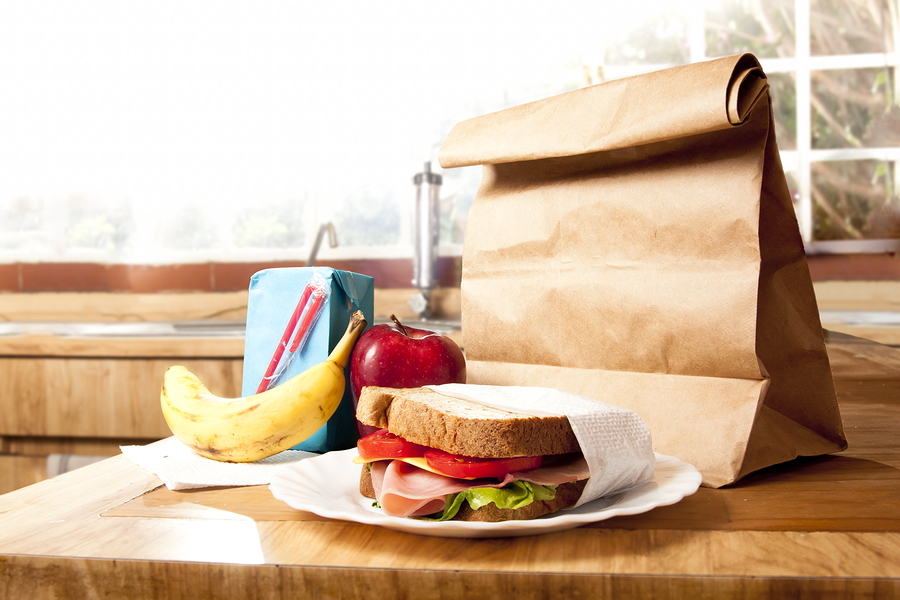 Kids can probably feel it coming already. Summer freedom is about to be replaced by the structure of academic classes, sports practice, band practice, club meetings and homework. As parents, we have a daily opportunity to help our children reach their full potential by helping our kids make healthier lunch choices.
Kids can probably feel it coming already. Summer freedom is about to be replaced by the structure of academic classes, sports practice, band practice, club meetings and homework. As parents, we have a daily opportunity to help our children reach their full potential by helping our kids make healthier lunch choices.
In fact, research shows that nutritional habits and food selection directly correlate to school performance and behavior. Instead of relying on school menus, vending machines or chance, take control of the situation with the help of these guidelines.
1) Use Glass Containers for Meal Preparation
There is no rule that says lunch must be prepared the night before or the morning of the school day. On Sunday, plan and prepare meals for the coming week. Sealable glass containers will keep food fresh for days, so use them to organize and store a week’s worth of school lunches. Plastic works, but glass is just as reusable as plastic and actually works much better for heating.
2) Practice Proper Portion Control
A child who weighs 50-100 pounds should not be eating as much as their 200-pound father! Watch portion sizes and count out quantities, especially for snacks. If you pack healthy chips as a snack, 10 chips are adequate. Nuts are a great alternative. 10 almonds or walnuts – preferably unroasted and unsalted – will do the trick.
3) Think “Outside the Lunch Box”
The typical school lunch – a sandwich, chips and a piece of fruit – may be common, but it doesn’t have to be the rule. Shake things up a little and think outside the lunch box!
Use leftovers from the night before. If you had chicken or steak, slice it and place it on top of field greens. Replace a whole piece of fruit with a fruit salad, and pack a healthy dipping sauce for veggies.
4) Fresh is Best
Canned, processed and packaged foods are usually higher in cost and lower in nutritional value than food you prepare yourself. Foods that naturally rot and spoil – foods that haven’t been contaminated with chemicals and preservatives – are the best to eat. Just eat them before they get to that point! The less prepared the food is, the better.
5) Scrap the Sugar, Salt and Soda
Watch for sugar and salt content, especially in snack foods. It only takes a matter of seconds to read the label and discover this. If sugar is among the top two ingredients, find something else. Keep in mind that food companies like to disguise sugar with names like high fructose corn syrup and sucrose.
Sugar is the leading cause of obesity in both children and adults. Individuals consume an average of 150 pounds of sugar per year. Just one can of soda per day can add 15 pounds per year in weight gain. There are plenty of delicious, healthy alternatives to salt, sugar and soda.
6) Take the A-F Test
Empower your children to make healthier food choices by using the A-F Test. Let your child grade their foods, A through F, just like their teachers would great a test in school. As part of the test, let your children help with the shopping and food preparation.
The final step is the taste test. Let’s face facts. Kids won’t like everything. If your son gives broccoli a D or F, he won’t eat it, so try something else. This will encourage your child to try new foods and help you pack lunches that they’ll enjoy.
7) Try the Three-Bite Rule
This is for desserts – the ones that we know are fattening or not particularly healthy. The three-bite rule will allow your child to enjoy an occasional dessert and satisfy the craving for something sweet, but by limiting the dessert to three bites, you’ll keep wasted calories to a minimum. This works for adults, too!
As we work to take back our health and help our kids do the same, we have to be realistic. Kids will be kids. They’ll eat things that aren’t good for them.
Our goals as parents should be to control as best we can what our kids are eating for breakfast, lunch and dinner, including the meals they eat at the school cafeteria. As the year of the family transitions from summer to the school year, let’s teach our kids to make the kinds of healthy food choices that will stay with them for the rest of their lives.
What healthy lunches do your kids enjoy the most? Join in the conversation on Facebook.
Dr. James Proodian is an accomplished chiropractic physician and health educator who founded Proodian Healthcare Family of Companies to help people feel better, function better, and live longer. His expertise for the past two decades has been in physical rehabilitation, and he has successfully established himself as a spinal specialist. In his practice, he advocates the science of functional medicine, which takes an integrative approach to treating patients by addressing their physical, nutritional, and psychological needs. Alarmed by the escalation of complex, chronic illness in our country, Dr. Proodian has been speaking to companies and organizations through his “Wellness at Work” program since 1994, motivating thousands of people to make positive lifestyle choices and lead healthier, more productive lives. He can be heard weekly on his radio program, “Proodian Healthcare By Design,” on Tandem Radio.